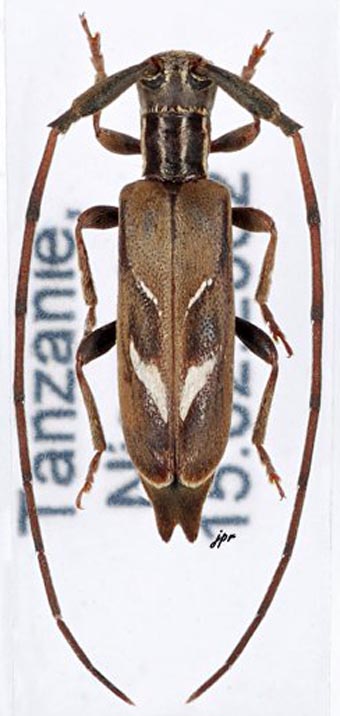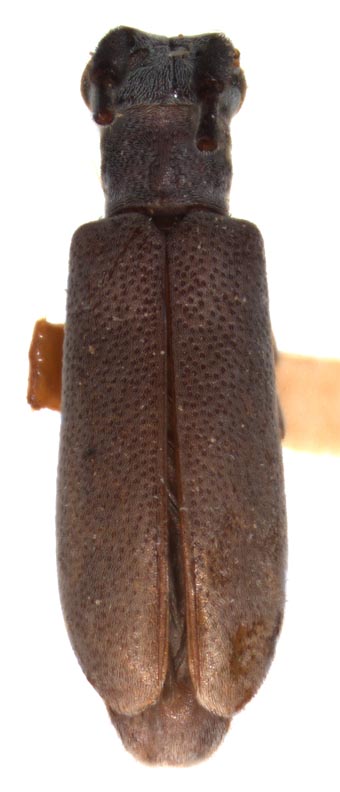|
Eunidiini Classification
Selected References to Larvae Specimens |
 Eunidia olivacea Breuning, 1954; dorsal Cerambycidae:Lamiinae:Eunidiini Photograph © J.-P. Roguet  Eunidia philippinarum Aurivillius, 1922; dorsal syntype specimen Cerambycidae:Lamiinae:Eunidiini Photograph © S.W. Lingafelter |

